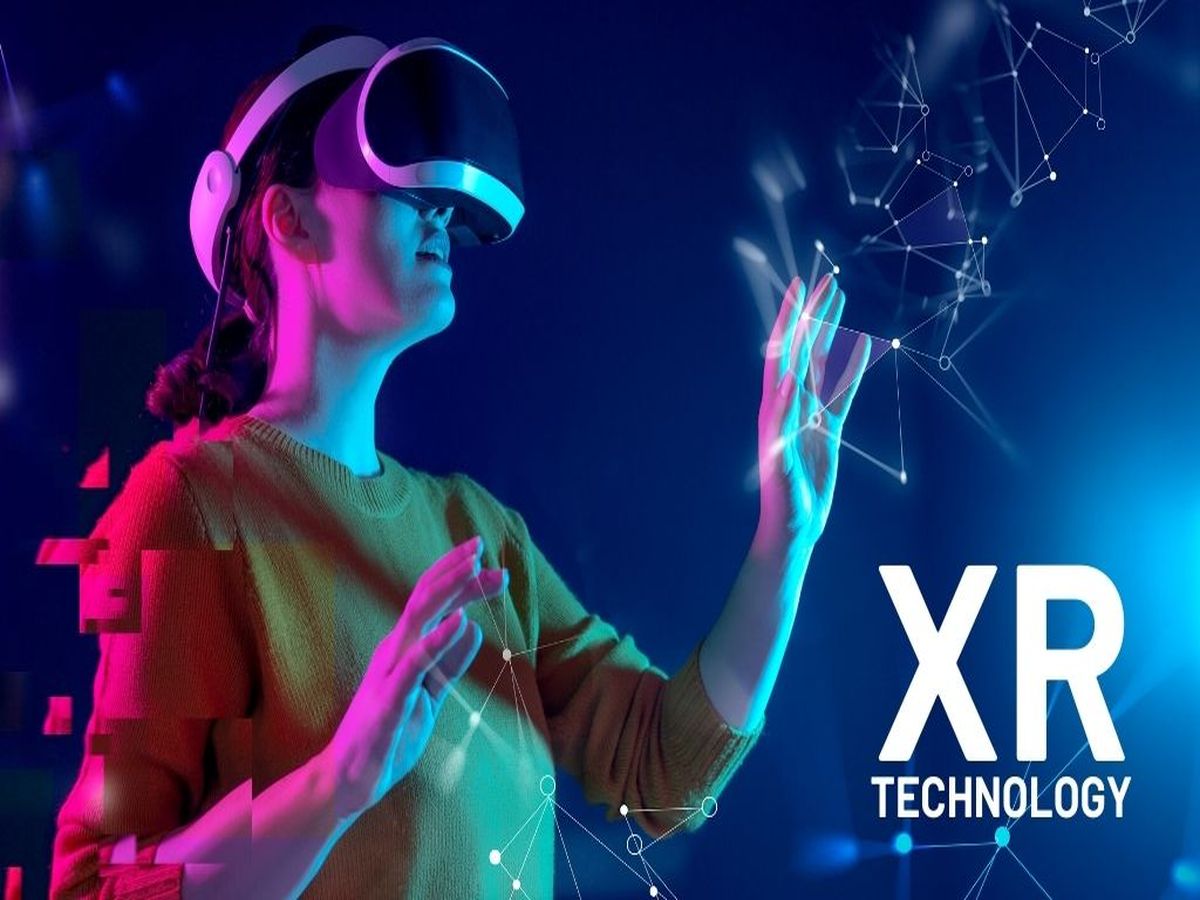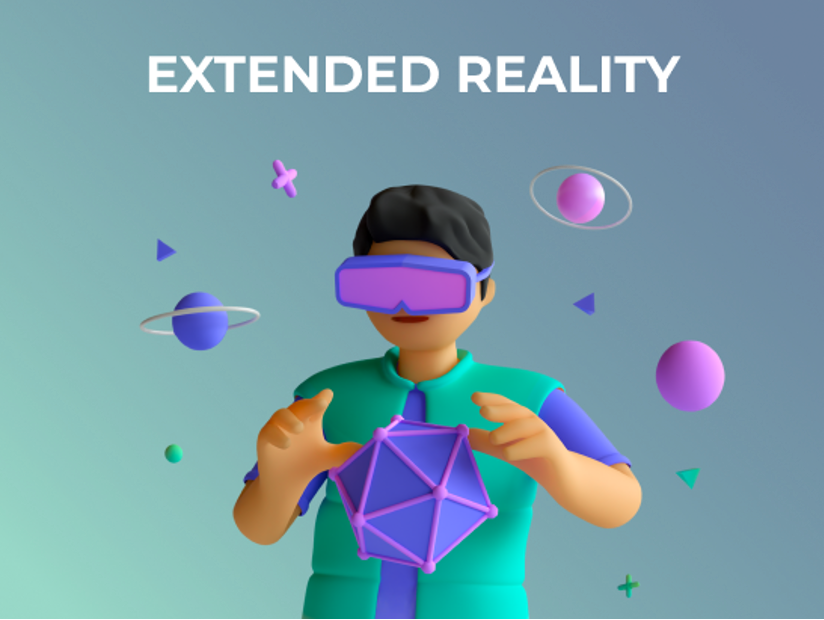Extended reality (XR) describes technologies integrating real and virtual settings to create engaging and immersive experiences.
Augmented reality (AR), virtual reality (VR), and mixed reality (MR) are some of the technologies found under the XR umbrella. Notably, virtual reality is a technology that immerses people fully in a digital simulation, cutting them off from their physical surroundings.
A virtual environment is mostly displayed via lenses and screens while users wear a VR headset that Records their head movements. Users are allowed to explore virtual surroundings, interact with objects and participate in different activities via VR experiences.
On its part, augmented reality overlays digital information onto the physical world, boosting the user’s perception and interaction with their real-world surroundings. Normally, AR is used with tablets, smartphones, and AR glasses. Users can concurrently engage with both physical and virtual aspects due to its ability to project virtual text, objects, and images into the real world.
Many sectors, such as education, industrial training, gaming, and navigation utilize various augmented reality applications.
On the other hand, mixed reality is a hybrid type of reality that integrates components of AR and VR. MR system users can engage with virtual items while remaining conscious of and engaging accordingly with their real-world surroundings.
Wearing specialized glasses or headsets is a common need for MR, which powers the appearance of virtual objects and their seamless interaction with the physical world by tracking the user’s surroundings and their position.
XR technologies are used for many purposes, including gaming, education, recreation, online meetings, training simulations, online collaborations, healthcare, architectural and industrial design, and a lot more. By creating immersive and compelling experiences past the conventional interfaces, XR comes with the potential to fully change how users engage with information, learn, communicate, and experience different virtual worlds.
Related: Imversed is Reinventing the Future of Social Media Using XR Technology
How Extended Reality Operates
XR works by creating immersive experiences that integrate the real world with virtual components. The particular workings of XR depend majorly on the technology that is being used, whether it is AR, VR, or MR.
Here is how these platforms operate:
Virtual Reality
Virtual reality technology creates immersive experiences by replacing a user’s surroundings with virtual surroundings. Users need to put on a VR headset that has highly-responsive sensors incorporated into it to track their head movements. These headsets show stereo 3D images that offer users a sensation of immersion and depth.
Notably, the realistic experience is also improved by the spatial audio offered by built-in headphones and speakers. While using VR, users use handheld controllers to interact with their virtual environment, and the system carefully tracks the controllers to map the users’ motions and positions.
Augmented Reality
Integrating virtual features in physical world environments is referred to as augmented reality, which enhances a user’s perception of and engagement with their immediate surroundings. Tablets, smartphones, and special AR glasses can readily deliver AR experiences. The device’s camera records the surroundings, while the accelerometers and gyroscopes monitor its location and orientation.
AR software meticulously analyzes the camera feed, which identifies characteristics and objects in the physical environment. In that context, the user’s vision is rendered and expertly superimposed with virtual text, objects, or images on the device’s screen or via AR glasses. Gestures, touchscreens, and voice commands can all be utilized by the users to interface perfectly with the virtual components.
Mixed Reality
Users readily interact with virtual items while remaining aware of and engaging with their real-world environments due to mixed reality, which features elements of both AR and VR. Just like VR and AR systems, MR headsets are installed with sensors, cameras, and displays.
By using these sensors and cameras, the mixed reality system maps the physical area to digitally represent the real surroundings. Then, virtual objects are introduced and fixed in place in the user’s field of view, supporting natural interaction and occlusion with the surrounding environment. Users get a chance to modify and interact with virtual items while they concurrently view and engage with their physical surroundings.
Benefits Of Extended Reality
XR has many benefits including improved learning, enhanced immersion, remote collaboration, efficient visualization, and increased accessibility.
XR provides improved immersions, which lets users lose themselves fully within virtual settings. The immersive environment sets up realistic and accurate training simulations, engaging entertainment experiences, and interesting educational materials.
By supporting direct interaction and hands-on learning, XR enhances learning and memory. Users readily interact with virtual objects, participate in different interactive scenarios, visualize difficult concepts, and enhance information comprehension and retention.
Extended Reality has vital applications in architecture, manufacturing, and healthcare sectors, supporting realistic visualizations, collaborative design reviews, and virtual prototyping. This eventually results in great decision-making, lower costs, and increased effectiveness.
Moreover, by helping support virtual meetings and sharing virtual spaces irrespective of physical environments, XR supports distant collaborations. In that context, it increases output, minimizes travel costs, and encourages effective international cooperation.
Notably, by generating inclusive experiences for even those with disabilities, XR can help increase accessibility. It can provide different communication strategies, flexible user interfaces, and advanced sensory stimulation.
Challenges Affecting Extended Reality
Extended reality encounters different challenges such as user comfort, technical limitations, interoperability, content development, and privacy issues.
The technical limitations related to offering advanced XR experiences are a major challenge. Powerful software and hardware requirements for XR networks make them costly and may hinder their general adoption, mainly for people and organizations with low funding.
Furthermore, some of the users might have pain and other sensory issues arising from XR’s immersive nature, such as eye strain, motion sickness, or confusion. For the general acceptance and adoption of this technology, it is important to assure users’ comfort and safety during long XR sessions.
The need for content development and creation presents another notable challenge. Specialized material supporting the specific technology and platform is required for XR experiences. It might take lots of time and funds to curate top-quality extended reality content, and that requires knowledge of 3D animation, modeling, and interactive design. It is still challenging to get diverse and interesting XR content for use in most contexts and fields.
Interoperability and standardization also present many more challenges. Extended reality incorporates multiple platforms, devices, and technologies, each of them with distinct needs for interoperability. Cross-platform experiences and faultless interoperability between different XR networks can be challenging to operate, which obstructs integration and widespread adoption.
In extended reality, ethical issues and privacy are also notable challenges. Data security, privacy, and user consent worries have to be resolved since XR experiences include collecting and analyzing user data. Utilizing XR in delicate contexts such as education, healthcare, and the workplace also may result in ethical issues and that needs cautious consideration of data consent, ownership, and responsible collection and use.
Is The Metaverse An Example Of Extended Reality?
The metaverse concept and XR seem closely related. But, they are not the same thing.
XR consists of integrating digital and physical environments to create engaging experiences. On the flip side, the metaverse is a virtual universe or interlinked network of virtual and augmented realities. It surpasses the restrictions of extended reality and spans a massive digital space where the users engage with multiple virtual experiences and communities.
Related: The 3 Prerequisites to Enter the Metaverse
Social interactions, user-generated content, economic mechanisms, and persistent online places are the fundamentals of the metaverse. It aims to deliver an experience that surpasses specific extended reality technology and is immersive, shared, and collaborative.
The metaverse idea goes far beyond XR and features a huge vision of a wholly realized virtual universe with its local economy, opportunities, and social dynamics meant to boost user creativity and participation. While XR mostly contributes to realizing the metaverse by offering the foundational technologies for augmented and virtual experiences, the metaverse concept spreads far beyond XR.










